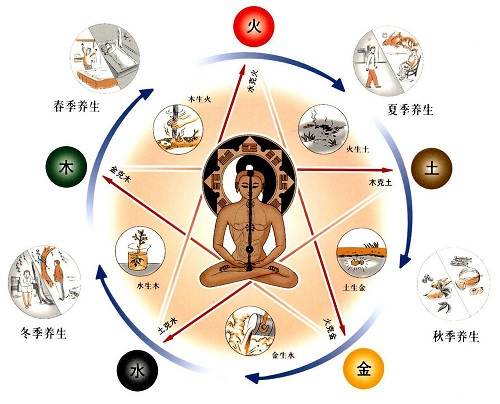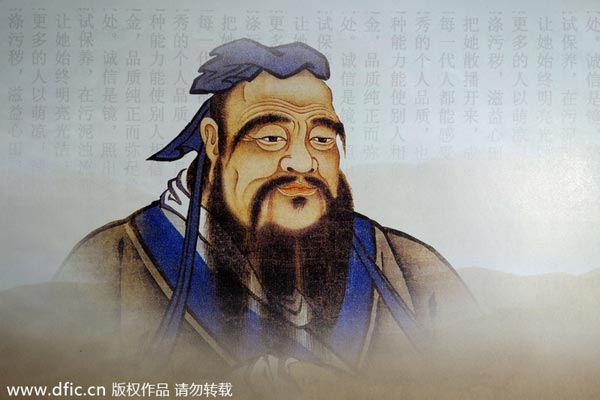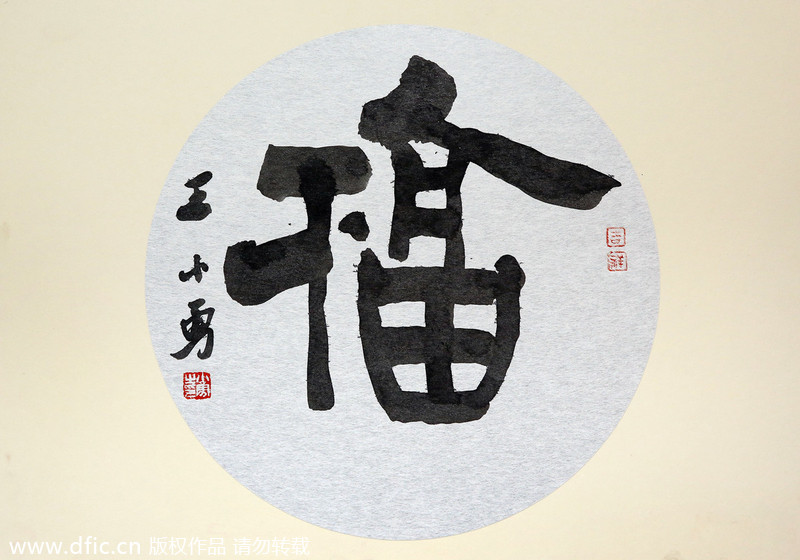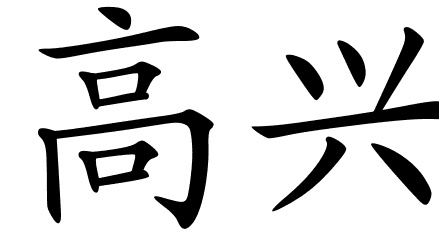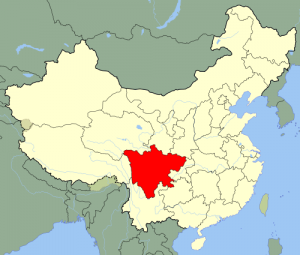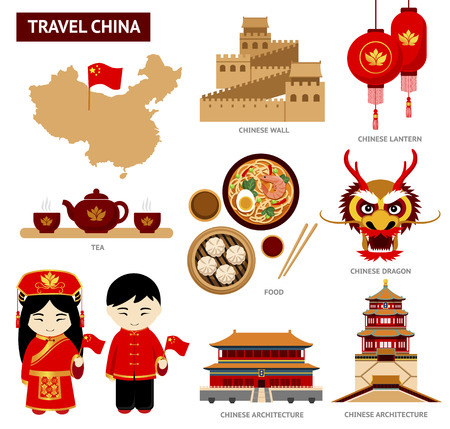
Top 10 Chinese Cultural Symbols
What do you associate with China? As a nation with a cultural history spanning over 5,000 years, China is abundant in civilization and culture. What comes to mind when you think of the most representative and associated elements of China?
We have compiled a list of the ten most prominent cultural symbols of China.
Confucius (551-479 BC), also known as Kongzi, was a philosopher and educator during the Spring and Autumn period in Chinese history. His teachings emphasize personal morality, which includes concepts such as humaneness, righteousness, etiquette, wisdom, and sincerity. Confucius’ principles are rooted in traditional Chinese beliefs and have a wide-ranging influence on Chinese culture. [Photo: IC]
Dragons (龙lóng) are mythical creatures that are often depicted with serpentine or reptilian features. In Chinese culture, the dragon symbol holds significant importance and is widely used on items belonging to ancient Chinese emperors, such as chairs and costumes. The dragon is considered to be a representation of power and is revered as a symbol of strength, good fortune, and prosperity.
The dragon has been an integral part of Chinese culture for thousands of years, and its significance can be seen in various aspects of Chinese life, including art, literature, and architecture. In ancient Chinese mythology, the dragon was believed to have control over the rain and water bodies, and was considered a symbol of the emperor’s divine right to rule.
Today, the dragon symbol remains an essential part of Chinese culture and is frequently used during celebrations such as the Chinese New Year, weddings, and other special occasions. The vibrant and colorful dragon dance is also a popular performance that is enjoyed by people of all ages.
In conclusion, the dragon is a legendary creature that has held immense cultural significance in Chinese history. It continues to be a symbol of power, good fortune, and prosperity, and its influence can be seen in various aspects of Chinese culture to this day.
Traditional Chinese Medicine (TCM) has been an integral part of Chinese culture for over 2,000 years. Developed in China, TCM encompasses various forms of treatment such as herbal medicine, acupuncture, massage, exercise (qigong), and dietary therapy.
TCM is a holistic approach to healing, with the belief that the body’s energy, or Qi, must be balanced for optimal health. TCM practitioners use a combination of treatments to restore the balance of Qi, with the goal of improving overall health and preventing disease.
Herbal medicine is one of the most commonly used forms of TCM. Practitioners use a combination of different herbs and plant extracts to create a personalized treatment plan based on the individual’s specific needs. Acupuncture is another popular form of TCM that involves the insertion of thin needles into specific points on the body to stimulate energy flow.
Massage and qigong, which involves gentle movements and breathing exercises, are also commonly used in TCM. These practices aim to improve circulation and promote relaxation, which can help to reduce stress and improve overall wellbeing. Finally, dietary therapy is an essential part of TCM, with the belief that food and nutrition play a vital role in maintaining good health.
Overall, TCM is a comprehensive system of medicine that takes a holistic approach to healing. Its focus on restoring balance and promoting wellness has made it an increasingly popular form of treatment in Western countries, where it is often used in conjunction with conventional medicine to provide a more comprehensive approach to healthcare.
Porcelain, also known as “china,” originated in China, which is why it is often referred to as such. It gained popularity due to its low cost and durability, making it a practical choice for everyday use. Additionally, porcelain is an artistic representation of the wisdom of the Chinese people. [Photo: baidu]
Beijing Opera, also known as Jingju, is often regarded as the quintessence of Chinese culture. It is the largest and most popular form of Chinese opera, known for its colorful costumes, elaborate makeup, and intricate musical performances.
What sets Beijing Opera apart from other forms of Chinese opera is its impressive repertoire. With over 1,400 different plays, Beijing Opera offers a wide range of stories and themes for audiences to enjoy. Its popularity is reflected in the abundance of artists, opera troupes, and spectators that it attracts.
The history of Beijing Opera dates back to the late 18th century, during the reign of the Qing Dynasty. It was initially developed as a form of entertainment for the royal court, but quickly gained popularity among the common people. Today, Beijing Opera remains an essential part of Chinese culture, and its performances can be enjoyed by people all over the world.
Beijing Opera performances are a feast for the senses, with stunning visuals and beautiful music that tell captivating stories. From tales of heroic warriors and beautiful maidens to stories of love and tragedy, Beijing Opera has something for everyone. Its rich history and cultural significance have made it a cherished part of Chinese heritage, and its influence can be seen in various aspects of Chinese life.
In conclusion, Beijing Opera is a beautiful and vibrant art form that represents the quintessence of Chinese culture. Its impressive repertoire, colorful costumes, and intricate musical performances have captivated audiences for centuries, and its popularity continues to thrive today. It is a true treasure of Chinese heritage and a must-see for anyone interested in experiencing the beauty of traditional Chinese art.
Kung fu, also known as wushu, is a collection of martial arts styles that have been developed and practiced in China for centuries. The term “kung fu” literally translates to “hard work,” reflecting the discipline and dedication required to master these ancient fighting techniques.
There are many different styles of kung fu, each with its own unique set of techniques and movements. Some styles focus on powerful strikes and kicks, while others emphasize fluid, graceful movements and intricate grappling techniques. Each style has its own history and cultural significance, reflecting the diverse range of Chinese traditions and beliefs.
Kung fu is not just about physical strength and skill; it also encompasses mental discipline, mindfulness, and spiritual development. Practitioners of kung fu strive to cultivate a balance between body and mind, harnessing their inner energy and concentration to achieve greater levels of physical and mental control.
Today, kung fu is practiced and enjoyed by people all over the world, with millions of enthusiasts studying and mastering its many styles and techniques. Whether you are interested in self-defense, physical fitness, or simply exploring Chinese culture and traditions, kung fu offers a rich and rewarding path for personal growth and development.
In conclusion, kung fu is a rich and diverse martial art that has been an integral part of Chinese culture for centuries. With its many styles, techniques, and philosophies, it offers something for everyone, regardless of age, gender, or fitness level. So if you are interested in exploring the world of martial arts and discovering the beauty and power of kung fu, there has never been a better time to start your journey.
The flag of the People’s Republic of China, commonly known as the “Five-Star Red Flag,” is a symbol of the country’s rich history and revolutionary spirit. The flag features a bright red field with five golden stars arranged in a specific pattern, representing the unity of the Chinese people under the leadership of the Communist Party of China (CPC).
The color red on the flag symbolizes the spirit of revolution and sacrifice that has driven the Chinese people for centuries. It also represents the strength and vitality of the Chinese nation, as well as the determination to achieve prosperity and success.
The five stars on the flag are arranged in a specific pattern, with one large star surrounded by four smaller stars. This pattern represents the unity of the Chinese people, with the larger star representing the leadership of the CPC and the four smaller stars representing the four social classes of China working together in harmony.
The flag is a powerful symbol of China’s rich history, culture, and political system. It represents the country’s commitment to unity, progress, and social harmony, and serves as a source of inspiration and pride for the Chinese people both at home and abroad.
In conclusion, the flag of the People’s Republic of China is a powerful symbol of the country’s rich history, culture, and revolutionary spirit. With its vibrant red field and five golden stars arranged in a unique pattern, it represents the unity and strength of the Chinese people under the leadership of the Communist Party of China. Whether flying high above government buildings, waving in the wind at sporting events, or adorning the lapels of proud citizens, the Five-Star Red Flag is an iconic symbol of China’s past, present, and future.
Chinese characters, also known as Han characters or Hànzì, are a unique and fascinating form of writing used by the most populous people in the world. Not only are they a practical tool for communication, but they also serve as an important part of Chinese culture and art. Chinese calligraphy, or Shūfǎ, is a prime example of this.
Chinese calligraphy is a form of artistic expression that uses Chinese characters as the medium for creating beautiful and intricate designs. It is considered one of the most important and revered forms of Chinese art, with a history that dates back more than 3,000 years.
The art of Chinese calligraphy involves using a brush, ink, and paper to create visually stunning works of art. Each stroke is carefully crafted and must be precise and balanced in order to create a harmonious and aesthetically pleasing composition.
In addition to being a beautiful art form, Chinese calligraphy also has practical applications. It is an important part of traditional Chinese education and is often used in official documents and ceremonies.
Chinese calligraphy is a reflection of the rich history and culture of China, and it continues to be an important part of modern Chinese society. As a traveler to China, I was fascinated by the intricate and detailed designs of Chinese calligraphy, and it was incredible to see how it was still practiced and revered in modern times.
In conclusion, Chinese characters and calligraphy are more than just a form of communication – they are an integral part of Chinese culture and art. Whether admiring the intricacies of a calligraphy piece or learning the basics of writing Chinese characters, it is clear that Chinese calligraphy is an important and fascinating aspect of Chinese society.
With fewer than 2,000 giant pandas (dà xióng māo) remaining in the world, this beloved creature, considered one of China’s national treasures, is teetering on the edge of extinction. Despite conservation efforts, the giant panda population continues to decline, making it one of the world’s most endangered species.
As the famous Chinese saying goes, “He who has never been to the Great Wall is not a true man.” The Great Wall (cháng chéng) is undoubtedly one of the most remarkable and iconic landmarks in China. It spans over 13,000 miles and is recognized as one of the Seven Wonders of the Medieval World.
The Great Wall is a testament to the ancient Chinese civilization and an incredible feat of engineering. It was constructed over 2,000 years ago during the Qin dynasty and was expanded upon during the Ming dynasty. The Great Wall served as a barrier to protect China from foreign invaders and played a significant role in the country’s history.
Today, the Great Wall is a popular tourist destination, attracting millions of visitors each year. The wall’s breathtaking scenery and historical significance make it a must-see destination for anyone visiting China. The experience of walking along the Great Wall is a once-in-a-lifetime opportunity that is sure to leave a lasting impression.
People and Culture
- The Stunning Beauties of China
- China’s Top Minority Cities
- Top 10 Chinese Cultural Symbols
- Culture Insider: Illustrations of 24 Solar Terms & Chinese Delicacies
- 8 Things You May Not Know About Start of Winter
- 6 Things You May Not Know About Minor Cold
- 8 Things You May Not Know About Autumn Equinox
- 10 Things You May Not Know About White Dew
- 9 Things You May Not Know About Start of Autumn
- 8 Things You May Not Know About Clear & Bright
- 5 Things You May Not Know About Grain Rain
- 6 Things You May Not Know About Grain Buds
- 7 Things You May Not Know About Summer Solstice
- 5 Things You May Not Know About Start of Summer
- 6 Things You May Not Know About Minor Heat
- How Much Do You Know About Lichun?
- The Most Amazing Chi-Pao Beauties of China
- The World’s Largest Annual People Migration!
- 8 Major Chinese Holidays & Festivals To Learn About
- Dragon Boat Festival
- China Marine Culture Festival
- Yao People in Guangxi Celebrate Red Clothes Festival
- Yao People Mark “Clothes Drying Festival” in Southern China
- Miao People Celebrate Coming Autumn
- Tajik People Living on Pamirs Plateau
- ‘Straw Beauty’ at Rice Cultural Festival
- Culture Insider: 4 Things You May Not Know About Teachers in Ancient China
- Lisu Ethnic Group – the Most Primitive Tribe in Yunnan
- China Observes 2,566th Anniversary of Confucius’s Birth
- The Rich Culture Heritage of Xinjiang
- Village in China with Population Growth Rate Around Zero
- Worship Ceremony for Yellow Emperor Held in Huangshan Mountain
- Lanterns, Festive Symbols of Chinese Culture
- Traditional Wedding Ceremony Held at N China’s Farmyard
- Do You Know These Chinese Spring Festival’s Traditions?
- Top Beauties in Chinese Provinces
- Miao People’s Sister Festival
- China – the Land of Variety Charm and Beauty
- Five Places in China to Get that Perfect Autumn Feeling
- 19 Reasons The Guy Next Door Would Tell You Never Go To China
- Discover Beautiful China in Spring Blossom I
- Discover Beautiful China in Spring Blossom II
- Discover Beautiful China in Spring Blossom Ⅲ
- Discover Beautiful China in Spring Blossom IV
- Discover Beautiful China in Spring Blossom V
- Amazing landscapes of China’s Xinjiang
- World’s Highest Glass Skywalk Gets Off the Ground
- Tranquil Qikou Ancient Town
- Stunning Sayram Lake in Xinjiang
- Seven Modern Wonders in the World: China Has Two
- The Contrast – Sea of Bamboo and Land of Golden Wave
- Gorgeous Lake View or Spectacular Mountain View, China Has Both!
- The Mysterious Lugu Lake
- Great Ancient Bridges & Grand Modern Bridges -China has Both!
- Top 10 Most Crowded Attractions for National Week in China
- 9 Things You May Not Know About Xinjiang
- Fairyland on Earth: Baishi Mountain in Hebei
- Skywalks on the Rise at China’s Tourist Attractions
- Picturesque Hulunbuir Grassland in Early Autumn
- Fairyland-like Ming Shi Garden in Guangxi
- Amazing Twilight View in Burqin
- Forbidden City in the First Day of Autumn
- Underground Forest in NE China
- Picturesque Scenery of Tibetan Plateau in SW China
- Mother-daughter Duo Cherish China Trip
- Top 10 Summer Resorts in China
- Enjoy the Amazing “Golden Sea” of Canola Flowers Bloom
- 22 World Heritage Sites in China Along The Silk Road
- Most Beautiful Season Comes to Prairie in Xinjiang
- China’s Ten Most Beautiful Hiking Trails
- Breathtaking Zigzag Cliff Road in Luoyang, Central China
- Beautiful Changbai Mountain in Jilin
- Ganbao Tibetan Stone Village : An Ancient Military Fortress
- The Most Perilous Peak: Huashan Mountain
- Yunhe Rice Terraces, China’s Most Beautiful Terraces
- China’s Most Beautiful High-speed Railway Line
- Jinli Ancient Street, One of The Oldest Streets in SW China
- Picturesque Night View of Fenghuang Ancient Town in China’s Hunan
- Enjoy The Stunning Views of Wuling Mountains
- Ruoergai is China’s Most Beautiful Wetland
- Old Town Breathes With Antiquity
- Fascinating Images of Jiuzhaigou Valley
- Explore World Heritage in China: Mount Langshan
- Tianmen Mountain at Zhangjiajie
- Fantastic Longshuixia Fissure Gorge in Chongqing
- 10 of The Most Spectacular Villages Across China
- The Great Wall of China
- The Forbidden City – Used To Be, Now and Forever
- Top 30 Most Beautiful Counties in China
- Top 5 China’s Ancient Towns
- The Most Beautiful Ancient Towns in China
- Explore the “Venice of The East” in China
- Autumn – Great Wall
- Autumn – Huangshan
- Autumn – Potala Palace
- Autumn – Beijing
- Autumn – Tibet
- Autumn – Fragrant Hills Park
- Autumn – Baicaowa National Nature Reserve
- Autumn – Panjin, NE China
- Autumn – Beijing’s Huairou
- Autumn – Yarlung Zangbo River
- Autumn – Jiuzhaigou Valley
- Autumn – NW China
- Autumn – A worker makes this autumn red and hot
- Autumn – Golden autumn in Jinchuan
- Top 10 Routes For a Road Trip Travel in China
- Top 10 Most Attractive Chinese Cities at Night
- Top 10 landmark attractions in China in 2014
- Top 10 most beautiful autumn sceneries in China
- Top 25 Interesting Places in China
- China Stretches from Earth to Heaven
- Xitang, The Most Romantic Town
- Cross if you dare to take the challenge
- Eight Popular Chinese Treats to Beat the Summer Heat
- Chinese Cuisine Stuns Thai Princess
- 10 Must-try Street Foods in Beijing
- Chinese Favorite Local Dishes
- Best Cities for Foodies in China
- A Taste of Popular Breakfast in China
- Top Ten Snack Streets in China
- Foreigners’ favorite Chinese dishes
- Why Chinese Campus Food Beats Western Colleges?
- More Chinese Restaurants in US than McDonald’s Stores Worldwide
- Authentic Chinese Food vs American Chinese Food
- Chongqing Hotpot Is a Taste of Life
- Eating Snack Food at Jinli Ancient Street in Chengdu
- A Bite of China – Introduction and Review
- A Bite of China – Ep 1 – Gifts From Nature
- A Bite of China – Ep 2 – The Story of Staple Foods
- A Bite of China – Ep 3 – Inspiration for Change
- A Bite of China – Ep 4 – The Taste of Time
- A Bite of China – Ep 5 – Secrets of the Kitchen
- A Bite of China – Ep 6 – A Perfect Blend of Five Flavors
- A Bite of China – Ep 7 – Our Farm
- A Bite of China, Season 2 – EP 1 – Footsteps
- A Bite of China, Season 2 – EP 2 – Heart’s Message
- A Bite of China, Season 2 – EP 3 – Seasons
- A Bite of China, Season 2 – EP 4 – Daily Domestics
- A Bite of China, Season 2 – EP 5 – Encounters
- A Bite of China, Season 2 – EP 6 – Realm of Secrets
- A Bite of China, Season 2 – EP 7 – Three Meals

Attractions
